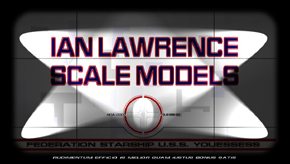Battlestar Galactica Viper MkII in 1/10th Scale.

PART 2
Howdo gang!
Welcome back and a short update to the proceedings. Time to smooth some ruffled feathers, or indeed the turkey feathers if you will.
The said feathers being the ones on the engine cans.
Now, a bit of fiddling about here. Some plasticard was in order, namely two bits of 1.5mm (0.059”) thick stuff laminated with the help of the liquid sticky stuff.
A bit of twisting and clamping up was required since the feathers partially overlap at the edges and go from angled out where they meet the big ring end up flattening out to almost follow the curve of the engine can at the rear.
First bit o’ business, getting the basic shape. Said shape appears to be slight asymmetrical edge curvature wise as well just to be difficult.
After some hacking and scraping down, this was it.
Then came the inevitable carving and sanding here and there to smooth out the rough bits.
And finally, a tapering piece of styrene cut from 1mm (0.039”) styrene and given a shaving down.
Also a small depression drilled into the end.
Well so far so good.
Next job was to get a base of sorts under this to make a good surface area for the eventual castings to glue on to the can.
This was supplied by some quick cure epoxy putty. It’s the kinda stuff you buy in stick form, just cut off the amount needed, knead and mix until the colour is uniform then apply, cured in about 20 mins.
Very handy for speed and ease of use.
First off though, so it didn’t stick to the resin can, some blue PVA release agent brushed on and left to dry.
So that surface ready, some putty mixed up a small amount added to the back of the turkey feather and some grunt like squeezing took place.
As the putty was curing, some shaping and additional detail was worked in.
While that was sorting itself out, some inner detail to be given some thought to.
Not the feathers have a partner of sorts on the inside. It’s a raised strip that runs down the inner rings.
Now fitting this to go flush to all the stepps would be a bit of a nuisance but for the quick cure putty…again.
Same kind of deal, blue PVA, squeeze in the putty on the large and small engine cans, leave alone to do it’s bit.
So once all settled, the cans were given a run under some warm water to dissolve the PVA and the parts removed.
The inner strips were simply trimmed to width and a quick sand smooth to the outer surface.
Test fit of the strip thingies to make sure I was doing me job right.

Nice and snug on both parts.
So these two plus the feather were shown to some RTV rubber and when that was sorted, some casting commenced.
Here are three of the feathers in position dry fit style.
It’s a start, just have to cast enough to do the big can and enough for the small can with just a bit of re-working to each feather taking into account the smaller circumference.
And that deal is for next time so see thee then for more hellhole mayhem.
__________________
To contact Ian Lawrence for his professional services, please click the banner link below…
To visit Ian Lawrence Scale Models, the site, please click on the banner link below…



















